The best tools, software, gadgets, books, magazines, and websites.
TOOLBOX

1. Access to audio out jack
2. Screen protector
3. Access to touch functions
4. Syncs and charges through travel cable

Security for Your iPod
iVod case for iPod
$80 and up, vajacases.com
My name is Jason, and I’m an addict. I’m hooked on Argentine leather, quality craftsmanship, and amazing electronics cases.
Years ago, when I bought a Handspring Visor Deluxe, I searched for a case that would be both useful and protective. I was working in a technology position and had to look up dozens of passwords and project details on a moment’s notice. The Vaja Visor case was perfect for holding the info. It had a great belt clip, screen protection, and good padding, as well as slots for ID and credit cards, so it doubled as a wallet.
Happy with my Visor case, I bought a Vaja cellphone case. It, too, is made of the same incredible leather as the Visor case, with protection on the corners in case of drops and padding on the front to protect it from hitting something as I walk.
When I bought an iPod I went straight to Vaja. The iVod case was perfect for my needs: screen protection, security for the iPod, and an incredibly strong belt clip.
— Jason Griffey
One-Stop Bot Part Shopping
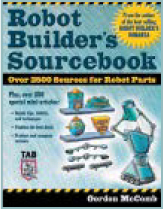
Robot Builder’s Sourcebook,
by Gordon McComb
$25, ISBN 0071406859, McGraw-Hill/
TAB Electronics
Every techie subculture has its chief instigator. For hobby roboticists, that guy is Gordon McComb. In 1987, McComb published Robot Builder’s Bonanza (TAB), the first serious book to tackle do-it-yourself robotics projects. The book was rough around the edges, but it was a start, as it sent many budding hardware hackers into their garages to cannibalize the old family mower. Things have come a long way in the field of garage robotics since then, a fact reflected in one of McComb’s more recent efforts, Robot Builder’s Sourcebook. McComb is an obsessive networker and resource collector, and it shows in the hefty 711 pages of this book. Every component one might imagine needing for robot building, from literal nuts and bolts to plastic and metal stock to sensors, motors, and microcontrollers are covered in over 2500 listings. The book also includes some 250 sidebar articles with introductions to robotic systems, tips on choosing various components, how to find the best parts deals, and robot construction tips. If you are not a robot enthusiast, don’t be put off by the title. This directory deserves a home on the workbench of any maker who tinkers with electromechanical systems.
— Gareth Branwyn
Digital Photo Vault

Epson P-2000 Multimedia Storage
Viewer
$500, epson.com
I have a Canon EOS 20D digital SLR that I carry around on my trips. Since I save in the RAW format (6 MB+ per photo), I need a good hard-drive-based wallet that I can use to offload images on long trips. There’s a Belkin iPod connector that isn’t practical since it drains the iPod battery dead and takes forever to sync. There are also other digital wallets and media players that take CF cards, but the Epson P-2000 digital media wallet, with a speedy USB 2.0 connection, is the best I’ve tried. On a two-week trip to Brazil last month, I used it to hold over 2000 RAW images on its 40 MB drive. It performed superbly with more than half the drive left; the unit holds up to a full day of usage. You can transfer over 10 gigabytes of images before reaching for that A/C adapter at the end of the day. The 640x480, 3.8-inch screen is amazing, and so is the battery life.
— Joe Fung

Keep Your Money Like a Cabby
Taxi Wallet
$50, Hammacher Schlemmer plans to discontinue, but you can find one on eBay
Like so many hipster throwbacks these days, the compact taxi wallet arrives with a backstory. This unit was the supposed preference of cab drivers in the 30s, because it’s slim, roomy, and can snap onto your belt. Now, why you’d ever want to wear your wallet on your belt escapes me, but those depression-era taxi guys were probably a pretty colorful bunch.
This cowhide wallet has a very lightweight bi-fold design with rounded edges and includes a snap-open accordion pocket on the front for change or credit cards. A middle pocket behind that can be used to slide in a driver’s license and ATM card (just like in the 30s!). Another snap opens the inside where two billfold areas allow you to separate currencies or just keep your receipts sequestered from your cash.
I love this wallet because it’s light, durable, and very small, yet oddly expandable when you need it to be. Unlike the massive George Costanza models that some folks love (“a filing cabinet under half of your ass”), this little guy encourages you to do more with less. It slips easily into even a front jeans pocket, and the rounded edges make it easy on your pants.
Doesn’t make me want to drive a taxi necessarily, but my ass sure is grateful for the symmetry.
— Merlin Mann
Outsmart the Idiot Light
AutoTap
$180, autotap.com
The “check engine” light on our car has come on a few times, and I’ve always wondered what exactly was going on — and why I had to pay a mechanic $75 to turn it off.
Turns out that most cars made after 1996 have a special port called the OBDII interface (On Board Diagnostics, level 2). This is what the mechanics plug their scanners into when you bring your car in, and it’s the same port the $180 AutoTap diagnostic scanner plugs in to.
I had no trouble using AutoTap. I installed the software on my laptop (there’s a Palm version, too), and plugged it in. It revealed plenty of hidden data: AC system, Aux input, catalyst, ECT, EGR, engine load and speed, fuel systems, timing, 02 sensors, throttle and vehicle speed, and so on.
If your car currently has a problem, AutoTap will display Diagnostic Trouble Code (DTC) and what it means.
Depending on your car’s make and model, you can pay another $100 to access “enhanced” parameters for even more data.
I used AutoTap with a Tablet PC mounted on the dash. While I drove, AutoTap logged real-time data. The AutoTap software let me configure all types of “virtual instrumentation” to display.
AutoTap does also clear the “check engine” light. There’s no sense in paying the mechanic $75 to do that if you’ve already fixed the problem that set it off in the first place.
— Phillip Torrone
High-Powered Pocket PC Phone
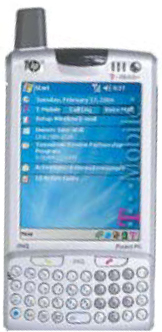
HP h6315 iPAQ
$600, shopping.hp.com
When I activated my HP h6315 iPAQ, I felt as though I were holding the sum of all digital communication in my hand. The stats on this new iPAQ model are staggering. Integrated quad-band GPRS mobile phone, 802.11b Wi-Fi, Bluetooth, 640x480 resolution camera, and an SD-MMC slot — in a package only slightly larger than most other Pocket PCs — make this one of the pinnacles of the mobile computing world. Battery life is also more than adequate, especially when throttling the use of Wi-Fi by manually disabling it when not in use. Prior to this device, I carried a cellphone, digital camera, MP3 player, and an older generation iPAQ, all contained in my Dockers “Mobile Pant” garment, and held up by a tight belt to prevent any accidental indecencies from occurring. Now I can ditch the pants and the belt, and carry around all those gadgets in a single device, in a single pocket.
— Mike Riley
 ELECTRONICS FOR EARTHLINGS
ELECTRONICS FOR EARTHLINGS
High-Voltage Reading
There Are No Electrons: Electronics for Earthlings, by Kenn Amdahl
$12.95, ISBN: 0962781592, Clearwater Publishing
I have a confession to make: I’m not a REAL geek. At least, I’m not if you have to have the mind of a mathematician, logician, and engineer to be a geek. I’m more of your arty-farty type; I’m a writer first, a geek wannabe second. I’m obsessively visual and have a hard time understanding concepts that aren’t graphical or story-driven in nature. Give me the stats on something and I’ll tilt my head like a dog hearing a high pitch; show me a handsome chart of the same information, or give me a workable analogy, and I’ll never forget it. Given this “handicap,” I wish I’d had Kenn Amdahl’s book There Are No Electrons: Electronics for Earthlings when I was first learning elementary electronics.
There Are No Electrons teaches its often intimidating subject matter through storytelling — really funny, bizarre, memorable storytelling. You’ll enjoy this book as a hilarious read as well as an electronics primer.
You’ll also wonder if Mr. Amdahl has been properly ventilating his workspace. This is trippyass stuff. Right from the start, Amdahl asks you to throw out everything you think you know about electronics — a grand, dark conspiracy perpetuated by engineers and high school science teachers — and embrace the truth, which is that horny, partying gremlin-like beasties called Greenies are what make electricity happen. The male Greenies (a.k.a. electrons) love to party, and they’ll do anything to connect up with the female Greenies (protons). All the basic components in an electronic circuit are explained through this fractured fairytale of the male Greenies and their unquenchable thirst to party. Along the way, we learn such eye-openers as the fact that magnetic lines of force are actually caused by Bruce, a fast-swimming Greenie duck (and millions of his kind); that heat in a circuit is caused by Greenies getting pissed off at being forced to move through tight spaces; and that there’s a relationship between capacitance and lutefisk (sorta). We also learn that almost all electronics pioneers were Norwegian: George Simon Ohm’s real name? Lars Thorvillson.
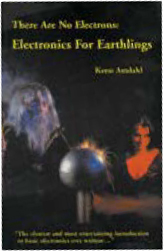
Okay, so some of There Are No Electrons is just plain inane, but I guarantee that, if you read it, you’ll never look at a circuit the same way again.
— Gareth Branwyn
 MAKE LOOKS AT THE SKIES
MAKE LOOKS AT THE SKIES
What’s Up?

Have you ever looked up in the night sky and wondered if that was a satellite you just saw?
I recently stumbled upon a website that did more for my budding interest in artificial satellites than several trips to the planetarium. Heavens-above.com gives the time and sky position of Iridium satellites, amateur radio satellites, the Hubble telescope, and other orbiting gadgets that reflect the sun’s rays as they streak across the sky above your house. And it’s easy to use. Start by entering your latitude and longitude from one of many map sites (I used the Tiger Map Server: census.gov/cgi-bin/gazetteer/) and sign up.
Each time you log in, you can peruse a long list of upcoming fly-bys, illustrated with beautifully minimal maps, definitions of terms, and links to the various space agencies and military bases that launched these things. I was surprised when I climbed onto my roof at exactly 20:00:42 to witness the brief but brilliant flash of Iridium 31, just as predicted. Now that’s cool.
— David Albertson (with thanks to Kurt Clement)
+ Stargazing Via the Web
Slooh
$8/month, slooh.com
It was a dark and stormy night. At least it was in New Jersey, but over the Canary Islands off the northwestern coast of Africa, it was a nice, clear, dark night. Perfect for an evening of stargazing, so I turned to slooh.com.
This is a relatively new website that allows stargazers to access live images from 14-inch-diameter telescopes perched 8,000 feet up on Mount Teide. Far from the light pollution of city lights and blessed with stable weather, it is an ideal site for astronomical observatories. To boot, one can do an entire night of observing from 2:00 p.m. to 2:00 a.m. Eastern Time, due to the time difference between here and the Canary Islands.
All one needs to participate is a computer, a web browser and either dialup or broadband access to the internet. Beginners will enjoy the “Group Missions” offered by the company. These are like peering over the shoulder of an astronomer while he or she is observing. You can see a live image from a digital camera attached to the telescope. Slowly as the camera collects more light and switches to different filters, you can see the image build up. After 5 to 10 minutes, the result is a nice color picture of a planet, galaxy, star cluster, or other celestial object. Along the way, you can even take “snapshots” of the object and download them later. Although you can’t control the telescope, you can pan around and zoom into the images, switch to a high-magnification view or “All Sky” camera to see where the telescope is pointing. The interface features “Storytellers,” which are audio clips that describe each object. Live narration during missions is offered, and you can listen to sounds in the observatory as the telescope moves around the sky. There’s also a chat room where you can ask questions about astronomy.
For advanced users, Slooh offers “Solo Missions” where one can reserve time on a second telescope that will allow you to choose from a list provided, or enter the coordinates of your favorite objects.
— Kevin Conod
USB Thumb Drive Fill Up
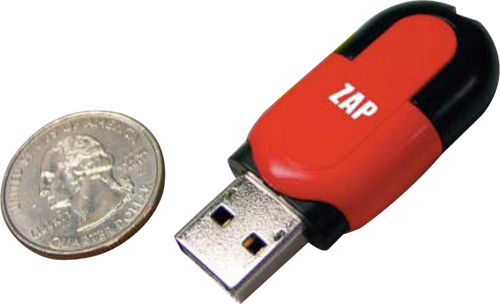
Essential applications and data to keep with you.
Rather than haul around a bunch of wasted space on your keychain drive, why not keep some useful data on there between big file transfers? For instance:
Browser: Either a standalone installation of Firefox (see MAKE, Volume 01, page 179) or at least a current copy of your bookmarks, exported from your browser as an HTML file. Add a copy of your RSS news and podcast feeds for access on the road or to share with friends.
Data: Besides the current project information that you’re sure you’ll need, grab a copy of all documents less than 90 days old from the “My Documents” folder on your computer. Add a PDF version of your contact list in case your PDA packs up.
Email: If you haven’t converted to a web-based email service, you may want a copy of your relevant mailboxes or a critical subset of your Outlook .pst file.
Photos & Music: Interesting photos you’ve shot in the last few weeks, a couple from the last vacation, and some sentimental favorites can all be big hits at the office or when visiting friends. Throw in your top 20 MP3s as a boredom antidote.
Manuals: Having a PDF copy of the manuals for your cellphone, camera, and car can come in very handy on trips. (Check the relevant OEM’s website for these gems.)
Software: You’ve probably got a list of your “go to” programs, but before dragging all those zip files over, see what you can get from the web (e.g., online virus checkers like Trend Micro’s Housecall). You may be better off with just a bookmark to the relevant tool.
ID: Put a “Please Return Me To.txt” file containing your contact information in the root directory. You may get lucky.
If you’ve got any particularly sensitive data, consider encrypting it and keeping a copy of the decryption program (but not the password!) on the drive as well. Once you’ve got the drive set up to your satisfaction, copy the files back to a dedicated file folder on your PC. Then you can erase the thumbdrive if you need the space for a big file transfer, and quickly restore it when you get back to your PC.
— Bob Scott
+ Stealth Screwdrivers
Snap-On GSDDX80 Screwdriver Set
$87, snapon.com
There is something terrifically romantic about late-night border crossings with red filtered flashlights, or racing through suburban subdivisions, drifting around every corner just 100 feet ahead of helicopter searchlights.
The whimsy soon gives way to practical concerns, like what kind of shoes do you wear with a black ski mask or what if you break down, risking detection from light reflected off chrome-plated tools?
I recommend wingtips and a set of Snap-On GSDDX80 screwdrivers in the black steel industrial finish. Snap-On sells wildly expensive professional tools, but that should not keep modestly budgeted, covert agents from owning ultra-precision screwdrivers of unsurpassed durability. Fortunately, a set of 8 industrial-finish Snap-On screwdrivers is not only completely badass, it is also 41% cheaper and 1000% less reflective than the same set in chrome.
Lamentably, life is full of neglected machines, and it is impossible to apply maximum pressure while turning a screwdriver as hard as you can. The Snap-On screwdriver solves this problem with a hex nut at the top of the shaft, just below the handle. With a wrench on the hex nut, turning leverage skyrockets and you can apply maximum downward force.
Sure, the Craftsman Professional $59, 10-piece set has the same hex nut, but wouldn’t you rather spend the extra couple bucks to evade capture?
— Mister Jalopy
Turn Your Wall into a Giant Post-It

Gripping Stuff! for Cards
$9 for an 18"x24" sheet, gripping-stuff.com
Summer after my sophomore year, my friend Chris decided that he wanted to pare down his belongings until everything he owned could be visible while standing in the middle of his room. If it couldn’t hang on a hook or fit on a shelf? Gone. If memory serves, this monastic phase didn’t last long into junior year, but I do remember being tempted by his vision of a completely exposed and manageable physical world. Well, wherever he is now, Chris definitely needs to hear about “Gripping Stuff! for Cards.”
This ingenious roll of felt-like fabric tape is just sticky enough to adhere to your wall and hold up most paper and light card items. It’s marketed as a way to display rows of holiday cards, but I’ve invested three full rolls (that’s 6 cut-up meters) in the service of a very intimidating-looking system for organizing index cards. Since the tape functions sort of like a Post-It note in reverse, you could also use Gripping Stuff! for brainstorming sessions, an office in/out board, or even to display photos and paper ephemerabilia.
It’s an excellent present for the spastic index card nerd in your life.
— Merlin Mann
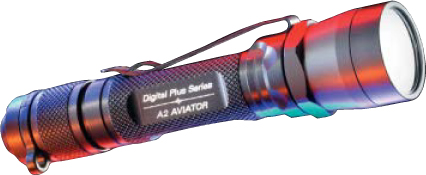
Bright Lights, Big Price
SureFire A2 Aviator Flashlight
$185, surefire.com
Referred to by aviators as “convenient metal tubes for storing dead batteries,” flashlights are one thing most of my pilot buddies hate to fool with. They want them to light up when they need them and not to bother with them the rest of the time. SureFire’s A2 is an excellent answer to that specialized problem and a surprisingly handy addition to my more ground-based existence as well.
The A2 “Aviator” is designed to produce both a bright, long-throw beam for preflight inspections and a much lower-intensity flood for general cockpit use under low light conditions. This is accomplished by a combination of three LEDs and a high-intensity bulb sharing the compact, “orange peel” finish reflector. Similar in size to a generic hardware store penlight flashlight, the A2 is constructed of machined aluminum, finished with a considerable amount of easy-to-grip knurling and coated with a rugged, grey-green, hard anodizing.
In use, the light is usually held in an “ice pick” grip with the rubber button on the end under the user’s thumb. Pressing it part way in activates the low-intensity LEDs. Further pressure kicks in the 50 lumen (read “way bright”) bulb. For continuous use, the tail cap can be screwed in to activate either mode without requiring button pressure. Similarly, the cap can be backed out to prevent any light activation or to just lock out the high-power bulb, to prevent accidentally ruining your night vision with an over-enthusiastic button press.
Why not use an LED for both tasks? High-power LEDs have an emitting surface several times the size of a comparable bulb, which consequently requires a larger reflector to produce an equivalently tight beam. If you want a long throw beam in a compact package, an incandescent bulb is still the best choice.
The A2 enhances its tech credentials with a unique digital power supply. This circuit provides voltage regulation to the incandescent bulb to ensure uniform light output over the life of the batteries, and it does a remarkable job.
— Bob Scott
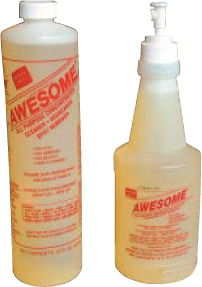
Degrease Anything for 99 Cents
LA’s Totally Awesome All Purpose Cleaner and Degreaser
$.99, 99¢ Only Stores
Los Angeles is awesome. A paradise. And I would probably use LA’s Totally Awesome even if it didn’t work — just to give props to my favorite city. But LA’s Totally Awesome is totally awesome. Forget those petrochemical solvents that melt gloves and leave your hands poached like a boiled chicken, this 99¢ Only Store miracle works remarkably well.
In a bottle that would make Dr. Bonner proud, there are dilution ratios for everything from cleaning aircrafts to removing vomit. I am sure it is wonderful at cleaning conveyor belts at 10:1 or smoke damage at 2:1, but I believe it is at peak utility when cleaning greasy, oily, filthy mechanical parts. A 50:50 mix for warm water and LA’s Totally Awesome in a coffee can is a very effective parts cleaner. Add your nuts, bolts, shackles, and cotter pins and just roll it back and forth like a front-load washing machine for a few minutes.
— Mister Jalopy
Ultra Cheap Meter
Cen-Tech 7-Function Multi-Tester
$2 and up, harborfreight.com

By most measures, the Cen-Tech 7-Function Multi-Tester is not a groundbreaking piece of equipment. It measures AC/DC voltage and DC current. So what? Even your dad’s analog sweep meter can do that. But it also has a battery checker, diode tester, and little socket for testing transistors. Handy features, but the Cen-Tech feature set is hardly revolutionary.
At the time of this writing, the Cen-Tech is available at Harbor Freight for $5. Two months ago, I paid $4 for mine and I’ve heard rumors of it selling for $2 on super-mega-loss leader sales. The price is revolutionary. For the price of a fancy cup of coffee, you could buy two and throw one out of the car on the freeway.
So, does it work? Sure. Works swell. I’ve overloaded it, dropped it, found electrical shorts, and resolved issues just like it was a Fluke. And, it costs less than a fuse for a Fluke.
The Cen-Tech is worth the price just to open it up and look at how they can build it so cheap. Instead of a ribbon cable to the LCD, there is a multi-contact rubber gizmo (1) that connects to the circuit board (2) by pressure. And forget fancy switches soldered to the board; the plastic selector knob has contacts (3) that dial in your selection on a circuit board crop circle (4).
— Mister Jalopy
 MAKE LOOKS AT MATERIALS
MAKE LOOKS AT MATERIALS
Miniature World Materials
Plastruct Catalog
$5, plastruct.com
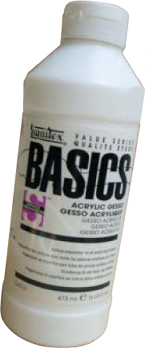
The next time you’re watching a sci-fi flick, especially a low-budget one, and they show a miniature F/X shot, say an asteroid mining colony or a spaceship fly-by, chances are, you’re actually looking at a significant portion of the Plastruct catalog. For nearly 40 years, Plastruct has been the go-to source for all types of plastic components used by hobbyists and professionals building everything from dollhouses and miniature train layouts to architectural models and art installations. Plastruct’s 155-page color catalog contains over 4,000 components, from plastic stock, to scaled renderings of natural and man-made components.
— Gareth Branwyn
Pour It on Thick
EnviroTex Lite Pour-On Gloss Finish
$14 for a pint can, available at art supply stores
Sometimes, one layer of varnish just doesn’t cut it. Depending on the project, sometimes 30 or 40 layers aren’t enough either. In fact, you may find that you’re the exacting sort who just isn’t satisfied with anything less than 50 coats.
If 3 days of drying time and hand-brushing seems a bit daunting, rest assured that all you need is a plastic cup, a stir stick, and my favorite short cut: EnviroTex Lite Pour-On Gloss Finish.
It’s traditionally used over wood to get that high-sheen-cowboy-saloon-bar-top-luster, but I’ve coated stone construction, plaster forms, sea grass webbing, and even (unsuccessfully) tried to make a lighting fixture by coating a blown-up colored condom. Some paper and printed matter becomes translucent when coated. Thin objects can be layered into the finish and coated again.
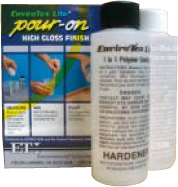
Whether it’s a cedar wall plaque or a motorized sculpture, a finished product is always ratcheted up a notch when sealed under a coat of this reactive polymer compound — and it’s waterproof, too!
— Matt Maranian
Gesso Simple
Gesso Priming Compound
About $12 a pint, available at art supply stores
Ever tried to use spray paint on styrofoam? The formerly pristine surface will shrink, blister, scab, and dissolve like the flesh of a blowtorch victim in a Herschel Gordon Lewis epic. Though fun to watch as far as toxic amusement goes, pigmented fissures may not be your desired result. I suppose it’s the odd/visionary/unfortunate individual who is faced with a dilemma like this one, but nonetheless, when I want to put a metallic spray finish (or any otherwise non-acrylic based paint) on a styrofoam form, acrylic polymer emulsion — or gesso — is my genie in a bottle.
Used primarily as a preparation on artist’s canvas, Gesso seals and stiffens the surface to which it’s applied, providing a medium for paints and finishes. Two or more coats can be sanded to provide more bite, or mask the texture of the sealed surface.
— Matt Maranian
Plaster Faster
Plaster Cloth
$6.50 for a 10’ roll, available at art supply stores
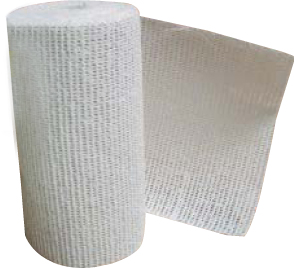
Once you’ve discovered Plaster Cloth, your creative life may never be the same. Virtually identical to the material used by doctors to encase broken limbs, the art store variety is a fine cotton mesh saturated with dry plaster. It’s sold rolled, up to four feet wide, and can be cut and trimmed easily with a pair of plain scissors. Generally, the cloth is dipped in water and then formed over an armature, although my preferred method is to position the material first, and then run a sopping wet paintbrush over its surface. When cut into narrow strips, triangles, or diamond shapes, rounded forms and biomorphic contours are a cinch. The plaster begins to harden in minutes, and once it’s dried, additional layers can be applied. Several layers thick, the hardened shell can be sanded, sawed, or drilled — I’ve even secured pieces together with bolts. The strength to the dried form is almost bulletproof.
— Matt Maranian
+ Mold It
Mix-a-Mold
$35 for 2.5 lbs., available at art supply stores
What do root canals and taxidermy have in common? In a word: alginates. Whether pressed into unwilling mouths for the replication of a rotted-out tooth or smeared over the tongue of the black bear you bagged last hunting season, alginate — a powdered derivative of algae and kelp — is a body caster’s best friend.
Mix-a-Mold, available in virtually any well-stocked art supply and craft store, is the easiest-to-obtain and simplest-to-use kit on the market. Casting is a just-add-water proposition and certainly need not be limited to body parts; if an item can be submerged into the gelatin-like mixture for a couple of minutes, you can replicate and cast virtually anything. Maybe you’ve had a life-long dream of building your own automaton or you’d simply like to duplicate the face of a treasured tiki mug. In any case, Mix-a-Mold is your first step.
Although the molds will keep for repeated use, after 24 hours, they begin to shrink and change form, which, depending on the project, might be a plus.
Alginate is a nontoxic casting material and it’s harmless to the skin, so if it was good enough for Jimmy Hendrix (the most notable subject of the celebrated groupie/artist team, The Plaster Casters of Chicago), it’s good enough for you.
— Matt Maranian
Have you used something worth keeping in your toolbox? Let us know at [email protected].
David Albertson is creative director of MAKE.
Gareth Branwyn writes about the intersection of technology and culture for Wired and other publications, and is a member of MAKE’s Advisory Board. He is also “Cyborg-in-Chief” of Streettech.com.
Kevin Conod is on the Board of Directors of the Middle Atlantic Planetarium Society and writes a weekly astronomy column for The Star-Ledger, the largest newspaper in New Jersey.
Joe Fung is the managing director of software product development for Burgiss Group.
Jason Griffey is an aspiring academic librarian, gamer, and computer geek who currently earns his living as a web specialist for Middle Tennessee State University.
Mister Jalopy breaks the unbroken, repairs the irreparable, and explores the mechanical world at his website, hooptyrides.com.
Steve Koschmann is president of Fluid Forms, Inc., in Boulder, Colo.
Matt Maranian is a writer and designer who spends way too much time with toxic compounds.
Merlin Mann helps people make interesting things for the Global Interweb.
Arwen O’Reilly is MAKE’s editorial assistant.
Mike Riley ([email protected]) is an advanced computing professional specializing in emerging technologies and new development trends.
Bob Scott is a statistical construct of various consumer electronics marketing departments.
